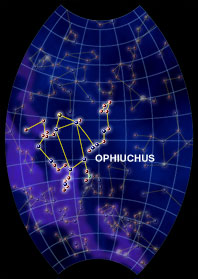Ophiuchus can be seen in the sky from June through October. Look for the teapot shape!
Click on image for full size
Windows to the Universe original image
Ophiuchus
The constellation Ophiuchus is known as the Serpent Bearer. In Greek myth, he was the god of medicine. One day he killed a snake, but another serpent appeared and healed his friend with plants. Ophiuchus saw this, and learned how to use herbs to cure people.
Hades was worried that Ophiuchus would bring everyone back to life. He wanted people to die and join him in the underworld. Zeus killed Ophiuchus for Hades, but put him in the sky to honor him.
The constellation is very dim, but has a neat shape. He looks like a teapot! There are actually three constellations in the image. Ophiuchus is holding the two constellations called Serpens Caput and Serpens Cauda. These three can be seen beginning in June and ending in October. He can be found near Hercules and Scorpius.
The brightest star is called Ras Alhague, and is the head of the serpent bearer.
You might also be interested in:

How did life evolve on Earth? The answer to this question can help us understand our past and prepare for our future. Although evolution provides credible and reliable answers, polls show that many people turn away from science, seeking other explanations with which they are more comfortable.
...more
In Greek mythology, Zeus (Jupiter in Roman mythology) was the king of heaven and Earth and of all the Olympian gods. He was also known as the god of justice. He was named king of the gods in the special
...more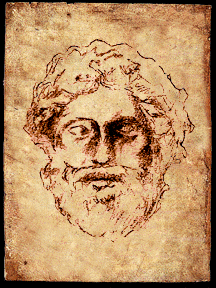
Hades was the god of the underworld. One day, while he was riding through the field of battle, the goddess Aphrodite had her companion Eros playfully shoot an arrow into the heart of Hades. Struck by Eros
...more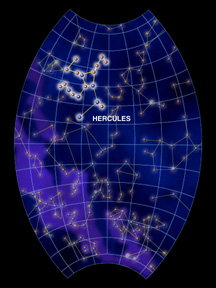
Hercules was a great warrior in Greek mythology. From the northern hemisphere he can be seen kneeling in the sky during Spring. From the southern hemisphere, he appears low in the north. Four bright stars
...more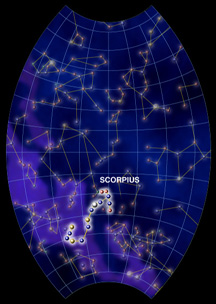
Some constellations do not really look like their names. It takes a lot of imagination to picture the stars of Pegasus as a winged horse, for example. But Scorpius really looks like a scorpion! It has
...more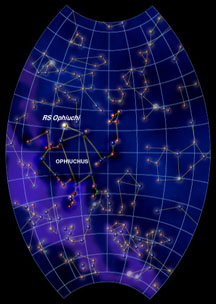
What's in a Name: Arabic for "head of the serpent collector" Claim to Fame: Brightest star, and the head of the serpent, in the constellation Ophiuchus. Type of Star: White Giant How Far Away: 62 light
...more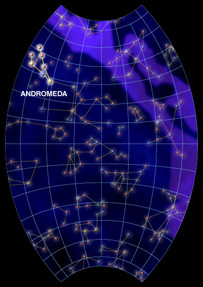
The fall constellation Andromeda is a Princess. She looks like a "V"! Andromeda is close to the north pole, so only a few people in the Southern Hemisphere can see it in the spring. Andromeda's parents
...more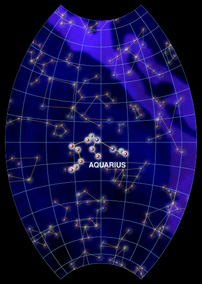
Aquarius is also known as the Waterbearer. There are several myths about this constellation. In Greek mythology, Aquarius was the young boy, Ganymede. Zeus sent Aquila to kidnap Ganymede. The boy became
...more


